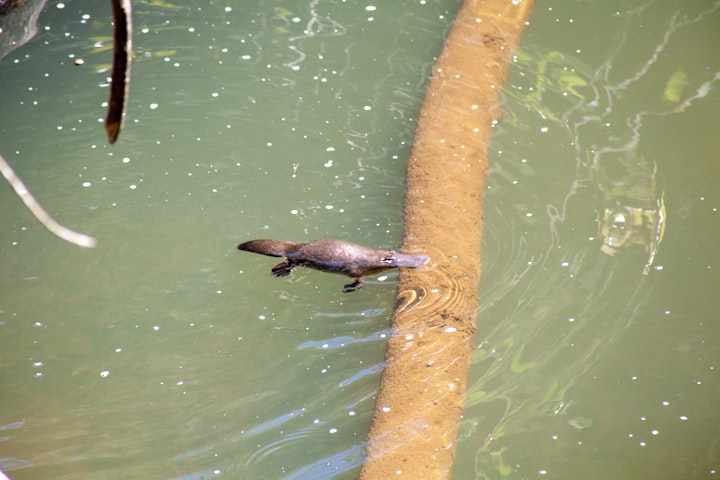
Platypus
The platypus is a unique and fascinating creature that is native to Australia. It is one of only two species of monotremes, which are mammals that lay eggs instead of giving birth to live young. In addition to this unusual reproductive trait, the platypus also possesses other distinctive features, such as a duck-like bill, webbed feet, and a beaver-like tail. In this article, we will explore the anatomy, behavior, and habitat of the platypus.
Anatomy
The platypus has a streamlined body that is covered in dense, waterproof fur. Its bill is flat and broad, much like that of a duck, and is lined with electroreceptors that help it locate prey in the water. The platypus uses its webbed feet to paddle through the water, while its beaver-like tail serves as a rudder. Adult platypuses typically weigh between 1 and 3 kilograms and measure about 50 centimeters in length.
One of the most remarkable features of the platypus is its ability to produce venom. Males have spurs on their hind legs that can deliver a painful venomous sting. While the venom is not lethal to humans, it can cause severe pain and swelling.
Behavior
The platypus is a solitary animal that is most active at night. It spends much of its time in the water, where it feeds on small invertebrates such as insects, crustaceans, and worms. The platypus has a unique way of foraging for food, using its bill to detect electrical signals given off by its prey. Once it has located its prey, the platypus stores it in special cheek pouches before returning to the surface to consume it.
The platypus is also an excellent swimmer, able to hold its breath for up to two minutes at a time. It can swim both forwards and backwards, using its webbed feet to paddle and its tail to steer. The platypus is known for its ability to swim in fast-moving currents and rapids, making it a skilled and agile predator.
Habitat
The platypus is found throughout much of eastern Australia, from the tropics to the cool temperate regions. It prefers freshwater habitats such as rivers, streams, and lakes, where it can forage for food and build its burrow. The platypus is an excellent burrower, using its strong forelimbs and sharp claws to dig tunnels in the riverbank. These tunnels can be up to 30 meters long and lead to a chamber where the platypus can rest and raise its young.
Threats
Despite its unique adaptations and fascinating behavior, the platypus is facing a number of threats to its survival. One of the biggest threats is habitat loss, as human activities such as damming, mining, and agriculture have altered the platypus's natural habitat. Pollution is also a major concern, as contaminants from agricultural runoff and urbanization can harm the platypus's sensitive electroreceptors.
Conservation
Efforts are underway to protect the platypus and its habitat. In 2021, the Australian government announced a $1 million funding package to support research and conservation efforts for the platypus. This includes efforts to monitor populations, improve water quality, and reduce the impact of human activities on the platypus's habitat.
Conclusion
In conclusion, the platypus is a fascinating and remarkable animal with unique adaptations that allow it to thrive in its freshwater habitat. From its duck-like bill to its venomous spurs, the platypus is truly one of a kind. However, the platypus is also facing threats to its survival, such as habitat loss and pollution. It is important that we take action to protect this incredible animal and its habitat, through conservation efforts and responsible environmental practices. By doing so, we can ensure that future generations will have the opportunity to appreciate and study this amazing creature.
About the Creator
Enjoyed the story? Support the Creator.
Subscribe for free to receive all their stories in your feed. You could also pledge your support or give them a one-off tip, letting them know you appreciate their work.






Comments
There are no comments for this story
Be the first to respond and start the conversation.